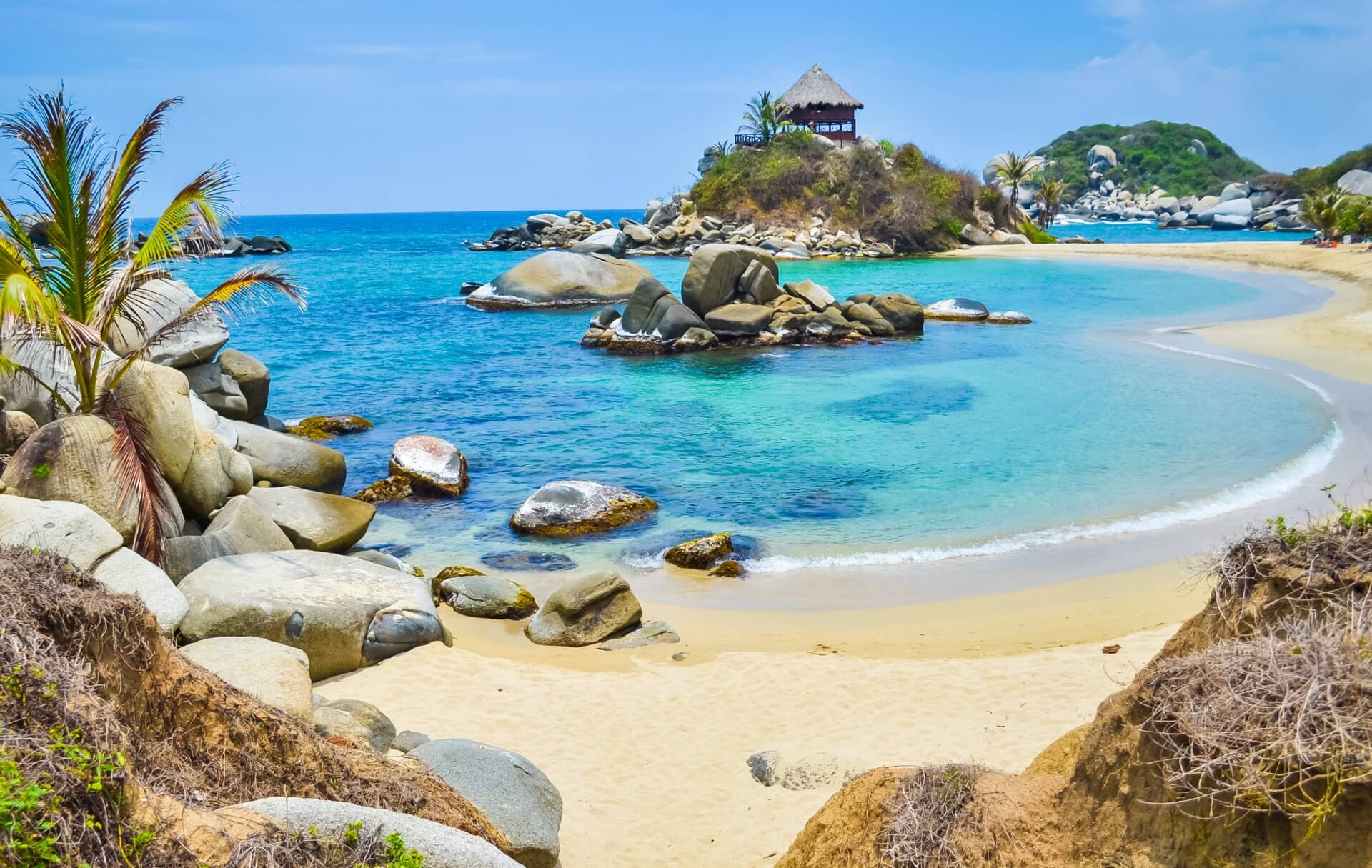COLOMBIA
COLOMBIA

Luscious mangrove swamps, pretty coral reefs and the heady blend of three different types of tropical forest. Welcome to Tayrona National Park, a haven for wildlife interwoven with subtle archaeological clues to the once great empires that roamed here.
This lush Caribbean coastal park, close to the lively and historic city of Santa Marta, is bursting with life across a multitude of different ecosystems and offers activities of all kinds to help visitors explore.
The park brings together 12,000 hectares of land with 3,000 marine hectares in order to protect the area’s dry, humid and cloud forests as well as important habitats out to sea.
Before the Spanish conquered this corner of the Americas, these lands were home to the revered Tairona people and their once great indigenous empire. Significant evidence of their way of life and clues to their impressive culture can still be found at archaeological sites inside the park, including Chairama, also known as Pueblito.
In 1969, Tayrona became a protected national natural park in recognition of its ecological and historic value and the fragility of its diverse wildlife, and it has been a popular destination among visitors and wildlife enthusiasts ever since.
Here we consider the many reasons to visit this much-loved park.
You may also be interested in: Pueblito in Tayrona

Teeming with life on land and sea
The climate in Tayrona National Park is close to perfect. It’s warm and sunny all year round, because most of the park is low-level and rises to just nine meters above sea level at its very highest point. This keeps the temperatures between a balmy 25˚C and 32˚C.
Visitors in search of outdoor adventure should be aware of the park’s two rainy periods, from May to June and from September to November.
Tayrona’s flora and fauna are a highlight of any experience here, particularly the park’s beloved birds, of which there are more than 300 species including the threatened Andean condor, crane hawk, boat-billed heron, white-necked puffbird, blue-headed parrots, lone and white eagle, and the foraging lineated woodpecker, among others.
Cotton-top tamarins can be spotted in the trees, as can more than a hundred mammal species that call the park home. The cotton-tops live alongside howling monkeys, pumas, deer, and several species of bats, as well as 31 different reptile species, 15 amphibian, 471 crustacean, and more than 1,000 marine species, including dolphins and turtles, which spawn in the park’s waters.
The park’s vegetation is the richest in the entire Colombian Caribbean, with more than 770 different plant species, ranging from cacti to 30-metre high trees. Tayrona National Park is also home to an incredible 350 different algae species, even though its waters represent a mere slither of its total vegetation.
In other words, take a camera because you will see breathtaking natural spectacles wherever you turn, including wildlife you won’t see anywhere else.
You may also be interested in: Destinations with dream experiences
Absorb the vast history of humankind

Animals aside, the park is important for its history of humankind, with various sacred sites dotted along the so-called ‘Black Line’, which tell the story of the indigenous communities that inhabit the Sierra Nevada de Santa Marta mountain range.
The best way to immerse yourself in the region’s indigenous history is to visit some of these sites, including the stone stairs and terraces of Chairama. This was once a great city, thought to have been founded in the fifth century and thriving until the Spanish finally conquered the Tairona in the 1600s.
Up to 4,000 people may once have lived at Chairama.
Things to do in Tayrona National Park

There are plenty of things to do in Tayrona, with something for everyone according to your fitness, ability and energy levels.
Given that it covers a rich stretch of sea, Tayrona National Park is a great site for diving, thanks to the diversity of its seas and its many diving sites.
Keen divers may want to head to La Cueva de Neguanje, Isla Aguja, or Bahía Concha and snorkeling is a great option too, for those not certified to scuba.
Birdwatching, horseback riding and swimming in the park’s many natural pools and waterfalls are a great way to relax and connect to nature, while hikes to its archaeological sites and along ancient stone roads are a great way to connect to the past.
The park offers plenty of enticing accommodation options, many of which are designed to immerse visitors in its historic and natural wonders. Consider camping or, if you like your creature comforts, lodge at the eco-habs in Cañaveral.
You may also be interested in: Tayrona Natural Park, where nature and archaelogy meet
How to get to Tayrona National Park?

Once you’ve reached the coastal city of Santa Marta, which has excellent connections to the rest of Colombia by air, land and sea and is a rich and historically significant city in its own right, the only way to access Tayrona is by taking the Troncal del Caribe road in the direction of Riohacha.
You will find several entrances to the park along this road, including Neguanje, Calabazo, and Cañaveral. Be aware that there is an entry fee to pay, with the proceeds contributing to the park’s ongoing protection and preservation.
You may also be interested in: Destinations with amazing nature



















